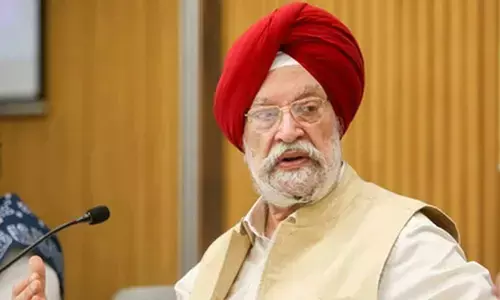An expansive treatise on a Golden era of Kakatiyas

An expansive treatise on a Golden era of Kakatiyas
“The brightest star in the galaxy of Deccan temples” said Gulam Yazdani,an eminent scholar in Deccan history referring to the architectural wonders of temples built during Kakatiya dynasty.
"The brightest star in the galaxy of Deccan temples" said Gulam Yazdani,an eminent scholar in Deccan history referring to the architectural wonders of temples built during Kakatiya dynasty.
And I must say the book "Kakatiya Heritage " Edited by Prof. M Pandu Ranga Rao is one of the brightest stars in the galaxy of books written on the Kakatiya Heritage.
The two parts of the book "Cultural Heritage of The Kakatiyas" and "Engineering and technological achievements during the Kakatiya period" are comprehensively written and compiled with very interesting nuggets of information on myriad of aspects contributed by stalwarts , experts and scholars like
P.V .Narsmha Rao, P.V. Parabrahma Sastry . Prof. M. Pandu Ranga Rao, Koluru Suryanarayana ,S.Prabakar , B.P.Acharya and many others.
The Kakatiyas were the most powerful kings of Telangana during the 12th and 13th centuries. The 200 or so years of their rule mark the high point in the prosperity, culture and art traditions of this part of the Deccan. Nowhere is this better seen than in the thousand-pillar temple of Hanamkonda and the Ramappa temple of palampet, both of which preserve a profusion of elaborate carvings. ,giving a glimpse into the imposing architecture of the era.The kakatiyas also invested in Agriculture is evident from the vast reservoirs, or cheruvus, that they constructed,providing much needed water to local farmers in the past and down to the present day.
Sri S.Nagabhusham has put it succinctly about the book in his introduction "A portrayal of the age of the Kakatiyas in the following pages unfolds to us multifaceted progress and prosperity The irrigation tanks ,small and large , brought about economic well-being to all .The numbers temples that sprang up in this region were the centres of diverse material and spiritual pursuits and they are the standing examples of religious liberalism . The Kakatiya polity is a fine model of democratic institutions .If history is to offer any lessons to the present and the future , the history of the Kakatiyas is worthy of emulation"
P.V.Narsimha Rao knew the region closely and had a profound understanding of the historic places and more particularly the localtemples which according to his observation is under represented. He writes about a marvellous structure " To describe the temple of Ramappa is to describe the temple of Ramappa is to demonstrate the inadequacy of the written word. Historians and pundits of architecture have attempted what may be termed a technical exposition of this remarkable structure. But they have failed to conjure up even a faint picture of the temple and is wealth of artistry and breath - taking beauty. What he eye sees, nothing else can fully convey.
He beautifully creates a symphony in his meticulous description of Ramappa temple . He writes 'The temples sculpture , especially the depiction of human activities ,shows fresh charm ,elegance and almost a metallic finish. The perforated screen pattern on the ranks of the door jambs, female figures in various dancing poses ,besides the Chauri-bearers and Dvarapalas standing cross-legged, pulsating with life and movement , all the supreme workmanship accomplished by the sculptor of the age."
In an exclusive article on Vaishnavism in the Kakatiya Period Sri Kovela Suprasannnacharya writes that Sri Vaishnava religion assumed important position during the Kakatiya period. Though there are many Vaishnava emples I te period of akatiyas the most popular among the different manifestation of the Lord was Kesava or Chinna Kesava.
He illustrated a comprehensive table giving details of 24 Kesava and other murthis of Vishnu with four armed murthis of Vishnu having 64 kinds which can be differentiated on he basis of the position of Sankha ,Chakra ,Gada and Padma in different arms.
The book couldn't have been completed without mention of World famous Thousand Pillar Temple by N.Ravi . In his detailed treatise , he discussed the temple's architectural feature ,interior and exterior of Rudreshwara , Vasudeva and the Surya shrines separate ly . His explaining of the Mukamandapam ,the Nandi Mandapa , the Kalayani Mandapa ,sculpture, Nritta Ganapati,Siva , Vishnu,Narsimha and Surya is quite insightful .
Amjad Ali's article on Kakatiya Literature and Art deals with Telugu Literature
,classical works, Architecture and Sculpture . He states that although ,Sanskrit didn't make much impact on literature as it was a class language patronised by the feudal landlords of the court, it enriched the Dravidian language with its Tatsamas . It made the Telugu literature more wider and appealing.
Prof. M.Pandu Ranga Rao and Dr Devi Pratap have done marvellous work through "Hydraulic structures during Kakatiya period and analysis through remote sensing" . The discerning study of surface water resources , soils, geology and drainage pattern of the Kakatiya region is very enlightening.
B.P.Acharya ,IAS served in the region as an administrator in different capacities and wrote a fitting personal tribute on Technological achievements of Kakatiya period . Describing the wonders of irrigational mechanics ,he observed that Warangal District dotted with five hundred big and small tanks ,built during the Kakatiya period patterned on a series of inverted pyramids ,is the finest example of this outstanding vision of water -management.
The historical works,with articles and papers ,done by experts and scholars are difficult to fault. They have meticulously studied various aspects of architecture, irrigation, literature ,art and polity pertaining to Kakatiya era.
The book embodies a comprehensive study on the architecture, irrigation
,literature and art of the Kakatiyas, a medieval kingdom of south India.The existing historiography on the Kakatiyas only reveal the political and economical conditions of the period. Elaborate discussions are made in the book on the vertical axis of the temples and other monuments with their typo-technological aspects. This guidebook is the first to describe the sites and monuments associated with the Kakatiyas, their contemporar ies and successors in and around the twin cities of Hanamkonda-Warangal. The objective of the book is to bring expansive documentary in a nutshell . The book does indeed achieve this aim.through its articulate.well-grounded text but even more through its copious deployment in a large format of excellent colour photographs maps and detailed drawings, with numerous plans and elevations of the temples, monuments and water bodies etc. under discussion. The paper back and the pages are very attractive with a high quality gloss papers which maintain the resolutions of the photographs and clarity of the maps and plans in the book.
More importantly , it is heartening to learn that Sri B.P.Acharya, IAS Director General ,Dr MCR HRD Institute,as usual, extended financial support to bring out this book . His keen interest in knowledge and his helpfulness made many institutions publish their pending works.
Overall. The Kakatya Heritage is a book for one and all . It is not only for the reference section of libraries and institutions but also quite useful for academic purposes and administrative training programmes for officials and other human resources held in Dr MCR HRD institute . The book will serve as a primer to any student of Indian history who is keen on exploring the glory of south India.
(The writer is a State Archives Director)














